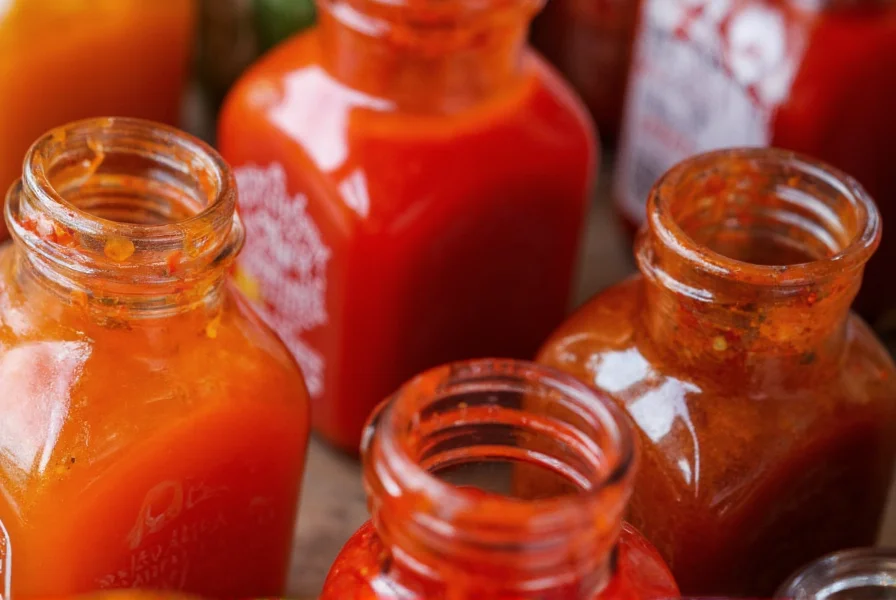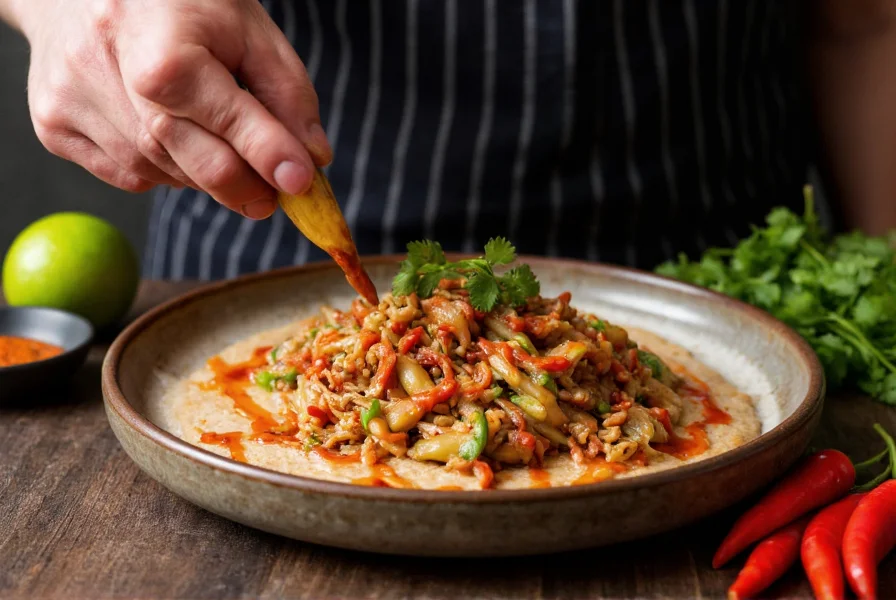Understanding chili sauce begins with recognizing its fundamental components and cultural significance. This fiery condiment has evolved from ancient Mesoamerican traditions into a global pantry staple with countless regional variations. Whether you're a culinary novice or experienced cook, knowing how to select and use different chili sauces can transform your cooking.
History and Origins of Chili Sauce
Chili sauce traces its roots to pre-Columbian Mesoamerica, where indigenous peoples combined native chili peppers with other available ingredients. When Spanish explorers brought chili peppers to Europe and Asia in the 16th century, they quickly integrated into local cuisines, creating region-specific variations. In Asia, chili peppers merged with existing fermentation traditions, giving rise to sauces like gochujang in Korea and sambal in Southeast Asia. The Tabasco sauce company, founded in 1868, represents one of the first commercialized chili sauce operations in North America.
Core Ingredients in Chili Sauce Variations
All chili sauces share chili peppers as their foundation, but additional ingredients create dramatic flavor differences:
| Base Ingredient | Common Variations | Flavor Impact |
|---|---|---|
| Chili Peppers | Jalapeño, habanero, bird's eye, arbol | Heat level and fruitiness |
| Acid Component | Vinegar, citrus juice, fermented acids | Brightness and preservation |
| Sweeteners | Sugar, honey, fruit purees | Balance for heat and complexity |
| Additional Elements | Garlic, ginger, fish sauce, fermented beans | Depth and umami characteristics |
The specific combination and processing method—whether fresh blending, fermentation, or cooking—determines whether you get a bright, vinegary Louisiana-style sauce or a deep, complex gochujang.

Global Chili Sauce Varieties Compared
Regional differences in chili sauce reflect local ingredients and culinary traditions:
Asian Chili Sauces
Sriracha (Vietnamese-inspired, popularized in Thailand and America) features garlic-forward flavor with moderate heat. Gochujang (Korean) combines chili powder with fermented soybeans and glutinous rice for sweet, spicy, umami complexity. Sambal oelek (Indonesian) offers pure chili pepper heat with minimal additives, while doubanjiang (Chinese) uses fermented broad beans alongside chilies.
North American Variations
Tabasco sauce (Louisiana) uses aged tabasco peppers in vinegar for sharp heat. Chipotle sauce blends smoked jalapeños with creamy elements. Frank's RedHot represents the cayenne-based vinegar sauces popular for buffalo-style dishes. Mexican-style sauces often incorporate roasted peppers like guajillo or ancho for earthier profiles.
Caribbean and African Interpretations
Haitian pikliz features shredded vegetables in a spicy vinegar solution. Jamaican jerk sauces combine scotch bonnet peppers with allspice and thyme. African shito uses dried fish or shrimp alongside chilies for umami depth uncommon in Western sauces.
Practical Applications in Cooking
Understanding how to use chili sauce properly separates casual users from culinary experts. The best approach depends on the sauce type and desired outcome:
- Finishing sauces like sriracha or Louisiana-style work best added at the end of cooking to preserve their bright, fresh heat
- Fermented sauces such as gochujang benefit from brief cooking to mellow their intensity while developing complex flavors
- Marinades using chili sauce should include acid and fat components to help distribute heat evenly
- Sauces with sugar can burn easily, so add them later in the cooking process
When substituting between chili sauce varieties, consider both heat level and flavor profile. A tablespoon of habanero-based sauce delivers dramatically more heat than the same amount of ancho-based sauce, while gochujang's sweetness and umami differ significantly from the vinegar punch of Tabasco.
Perfect Food Pairings for Different Chili Sauces
Certain chili sauces complement specific foods through flavor chemistry:
- Sriracha enhances egg dishes, noodles, and sandwiches with its garlic notes
- Gochujang creates ideal glazes for grilled meats and adds depth to stews
- Chipotle sauce complements creamy dishes like macaroni and cheese
- Vinegar-based sauces cut through rich fried foods like chicken wings
- Sambal oelek works well in seafood dishes where pure chili heat is desired
Professional chefs often create balanced heat by combining multiple chili sauce varieties in a single dish—one for upfront heat, another for background warmth, and perhaps a third for aromatic complexity.

Storage and Shelf Life Considerations
Proper storage maintains chili sauce quality and safety. Most commercial sauces contain sufficient vinegar to remain stable at room temperature before opening. After opening:
- Refrigerate vinegar-based sauces for maximum 6 months
- Fermented sauces like gochujang last 3-4 months refrigerated
- Homemade sauces without preservatives should be consumed within 2 weeks
- Always use clean utensils to prevent contamination
Signs of spoilage include mold growth, unpleasant odors, or significant separation that doesn't reincorporate with shaking. High-quality chili sauces may darken over time, which is normal and doesn't indicate spoilage.
Creating Homemade Chili Sauce
Making your own chili sauce allows complete control over ingredients and heat level. A basic recipe includes:
- 1 pound fresh chili peppers (mix varieties for complexity)
- 4 cloves garlic, peeled
- 1 cup vinegar (white or rice vinegar)
- 1 teaspoon salt
- Optional: 1 tablespoon sugar, citrus zest, or spices
Remove pepper stems, roughly chop, and combine all ingredients in a saucepan. Simmer 15-20 minutes until peppers soften, then blend until smooth. Strain for a thinner consistency if desired. Allow to cool before bottling in sterilized containers. The sauce will mellow and develop flavor over 1-2 weeks of storage.
Conclusion
Chili sauce represents one of the most versatile flavor enhancers in global cuisine. By understanding the different varieties, their flavor profiles, and appropriate applications, home cooks can elevate everyday meals with professional results. The key is matching the right sauce to the dish—considering not just heat level but also complementary flavors like garlic, vinegar, sweetness, and umami. Whether using store-bought varieties or creating your own, chili sauce offers endless possibilities for culinary exploration.
Frequently Asked Questions
What's the difference between hot sauce and chili sauce?
Hot sauce typically refers to thinner, vinegar-based sauces focused primarily on heat delivery, while chili sauce often indicates thicker preparations that may include tomatoes, fruit, or fermented elements. Chili sauce generally has more complex flavor profiles beyond just heat, though terminology varies regionally.
How can I reduce the heat of chili sauce in a dish?
Add dairy products like yogurt or sour cream, which contain casein that binds to capsaicin. Acidic components like lime juice can also help balance heat perception. For future reference, start with less sauce and gradually add more until desired heat level is achieved.
Which chili sauce works best for marinades?
Gochujang and chipotle-based sauces create excellent marinades due to their thicker consistency and complex flavor profiles that adhere well to proteins. Their sugar content helps with caramelization during cooking while the chili heat penetrates the meat.
Can I substitute one chili sauce for another in recipes?
Substitutions are possible but require adjustments. For vinegar-based sauces, use equal parts with potential salt reduction. For fermented sauces like gochujang, substitute half the amount plus additional liquid. Always consider both heat level and flavor profile when substituting between different chili sauce varieties.
How long does homemade chili sauce last?
Properly prepared and stored in sterilized containers, homemade chili sauce lasts 2-3 weeks in the refrigerator. For extended shelf life, process in a water bath canner for 15 minutes to create a vacuum seal, which can preserve quality for up to one year when stored in a cool, dark place.











 浙公网安备
33010002000092号
浙公网安备
33010002000092号 浙B2-20120091-4
浙B2-20120091-4